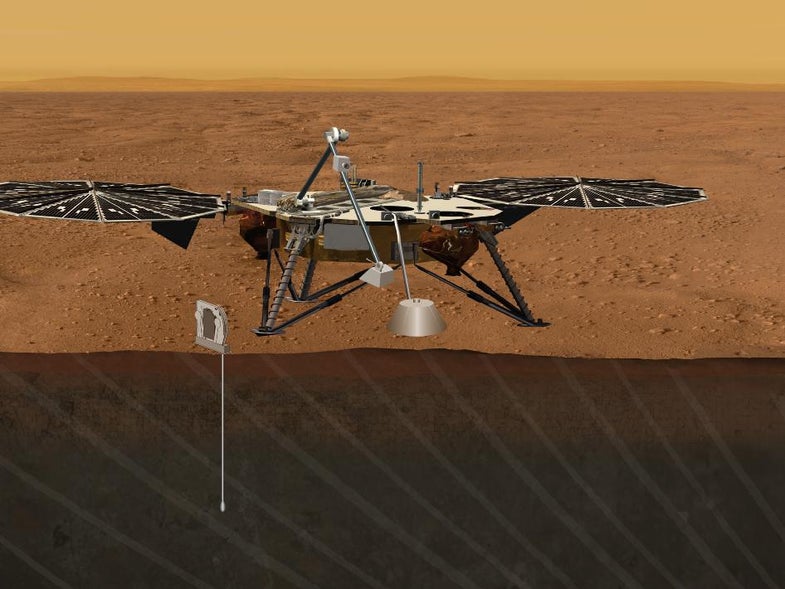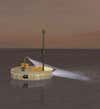NASA’s Next Mission Will Be a New Mars Lander, a Comet Hopper, or a Lunar Sailboat
It's decision time

If you could pick just one, would you A) send a new lander to Mars, B) send a robotic visitor to a comet, or C) send a ship to float in the hydrocarbon oceans of Titan?
NASA will pick one winner from these three projects, the space agency announced this week. The project will be capped at $425 million, not including the price of launch.
First on the table is the Mars Geophysical Monitoring Station, or GEMS, which will study the planet’s interior structure. It would carry three primary instruments, which would measure the planet’s wobble, marsquakes and geothermal heat flow. NASA says the mission could provide new information about the formation of rocky planets.
Next up is Comet Hopper, which will do just what it sounds like and alight briefly on a comet several times, observing how it changes as it interacts with the sun. Previous probes have already visited comets, smash wrecking balls into them and take their pictures, but this would study comets’ natural evolution.
And finally there’s the Titan Mare Explorer, TiME, which will float on one of the Saturnian moon’s massive oceans. It would be the second lander to alight on the moon after the Huygens probe, but the first to study an extraterrestrial body of water. It would study the methane-ethane oceans, possibly looking for any methane-eating inhabitants. It could also tell us whether Titan has a soggy interior, as some recently crunched Cassini data suggests.

Titan Mare Explorer
All the missions will provide high returns at low cost, according to NASA.
Along with these missions, the space agency will choose among three technology demonstration projects designed to look for more comets, deep-space asteroids and near-Earth objects. NEOCam would be a space telescope positioned at a Lagrange point, where it would look for small bodies that cross Earth’s orbit, according to the Jet Propulsion Laboratory. The Primitive Material Explorer (PriME) would study comet compositions, exploring their role in delivering water and other compounds to Earth.
And Whipple – ROSS (Reaching into the Outer Solar System) would validate a new method to search for distant celestial objects.
Those are smaller missions still in the planning phase, while the probe proposals are already fairly advanced.
Each of the probe proposals will get $3 million to build preliminary designs and test them, and NASA will review all three again in 2012, choosing one for launch.
Here’s an idea — why not let the public vote, American Idol-style, for the best one? Nothing against any of the hardworking principal investigators, but I’m going with the Titan float. Mars is great and all, and comets seem like fun to visit, but a Titan ocean lander seems like a no-brainer.